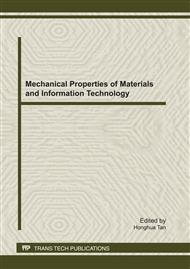p.300
p.305
p.311
p.318
p.324
p.331
p.337
p.344
p.351
Stochastic Optimization of Empty Container Repositioning of Sea Carriage
Abstract:
To improve the efficiency of empty container repositioning for a shipping company, a stochastic optimization model of empty container repositioning of sea carriage was established by chance-constrained programming. The objective function was to minimize the cost of empty container repositioning including shipping, rening and shortage cost. In the model, shipping cost was decided by the number of ship used for empty container repositioning. The constraints of the model included meeting the need of empty containers, limit to the number of empty containers provided and the capacity of shipping. The numbers of empty containers required are stochastic. The stochastis model was transferred to an integer programming one. Lingo9.0 was used to solve the model and simulation was done under varied parameters to get a good shipping strategy. The results show that the model can provide an effective program of empty container repositioning for a shipping company and it is a good way to raise shipping efficiency.
Info:
Periodical:
Pages:
324-330
Citation:
Online since:
September 2011
Keywords:
Price:
Сopyright:
© 2012 Trans Tech Publications Ltd. All Rights Reserved
Share:
Citation:


